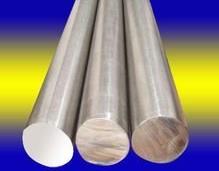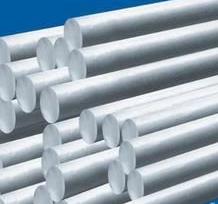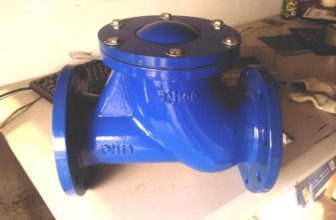
[ad_1]
Due to the characteristics of the two-phase structure, through the correct control of chemical composition and heat treatment process, the duplex stainless steel has the advantages of both ferritic stainless steel and austenitic stainless steel. It combines the excellent toughness and weldability of austenitic stainless steel with iron. The high strength and resistance of solid stainless steel

The chloride stress corrosion properties are combined together. It is these superior properties that make duplex stainless steel develop rapidly as a weldable structural material. Since the 1980s, it has become one of the martensitic, austenitic and ferritic stainless steels. steel. Duplex stainless steel has the following performance characteristics:
(1) Molybdenum-containing duplex stainless steel has good resistance to chloride stress corrosion under low stress. Generally, 18-8 type austenitic stainless steel is prone to stress corrosion cracking in neutral chloride solution above 60°C. Heat exchangers, evaporators and other equipment made of this type of stainless steel are used in trace chloride and hydrogen sulfide industrial media. There is a tendency to produce stress corrosion cracking, while duplex stainless steel has good resistance.
(2) Molybdenum-containing duplex stainless steel has good pitting corrosion resistance. With the same pitting resistance equivalent value (PRE=Cr%+3.3Mo%+16N%), the critical pitting corrosion potential of duplex stainless steel and austenitic stainless steel is similar. The pitting corrosion resistance of duplex stainless steel and austenitic stainless steel is comparable to AISI 316L. The pitting and crevice corrosion resistance of high-chromium duplex stainless steel containing 25% Cr, especially nitrogen, exceeds AISI 316L.
(3) It has good corrosion fatigue resistance and wear corrosion resistance. Under certain corrosive medium conditions, it is suitable for making power equipment such as pumps and valves.
(4) The comprehensive mechanical properties are good. It has high strength and fatigue strength, and the yield strength is twice that of 18-8 type austenitic stainless steel. The elongation in the solid solution state reaches 25%, and the toughness value AK (V-notch) is above 100J.
(5) Good weldability, small tendency of hot cracking, generally do not need preheating before welding, no heat treatment after welding, can be welded with 18-8 type austenitic stainless steel or carbon steel and other dissimilar types.
Duplex stainless steel
(6) The hot working temperature range of duplex stainless steel containing low chromium (18%Cr) is wider than that of 18-8 type austenitic stainless steel, and its resistance is small. It can be directly rolled to produce steel plate without forging. The hot working of duplex stainless steels containing high chromium (25%Cr) is slightly more difficult than that of austenitic stainless steels, and products such as plates, tubes and wires can be produced.
(7) The work hardening effect of cold working is greater than that of 18-8 type austenitic stainless steel. In the initial stage of deformation of the tube and plate, a large stress is required to deform.
(8) Compared with austenitic stainless steel, the thermal conductivity is large and the linear expansion coefficient is small, which is suitable for the lining of equipment and the production of composite plates. It is also suitable for making the tube core of heat exchanger, and the heat exchange efficiency is higher than that of austenitic stainless steel.
(9) There are still various brittle tendencies of high-chromium ferritic stainless steel, which should not be used in working conditions higher than 300°C. The lower the chromium content in duplex stainless steel, the less harmful the brittle phase such as σ is.
Duplex stainless steel has the characteristics of both austenitic stainless steel and ferritic stainless steel because it has austenite + ferrite dual-phase structure, and the content of the two phase structures is basically the same. The yield strength can reach 400Mpa ~ 550MPa, which is twice that of ordinary austenitic stainless steel. Compared with ferritic stainless steel, duplex stainless steel has high toughness, low brittle transition temperature, significantly improved intergranular corrosion resistance and welding performance; at the same time, it retains some characteristics of ferritic stainless steel, such as 475 ℃ brittleness, heat High conductivity, small coefficient of linear expansion, superplasticity and magnetic properties. Compared with austenitic stainless steel, the strength of duplex stainless steel is high, especially the yield strength is significantly improved, and the pitting corrosion resistance, stress corrosion resistance, corrosion fatigue resistance and other properties are also significantly improved.
Duplex stainless steel is classified according to its chemical composition and can be divided into four types: Cr18 type, Cr23 (excluding Mo) type, Cr22 type and Cr25 type. For Cr25 type duplex stainless steel, it can be divided into ordinary type and super duplex stainless steel, among which Cr22 type and Cr25 type are used more. Most of the duplex stainless steels used in my country are made in Sweden. The specific grades are: 3RE60 (Cr18 type), SAF2304 (Cr23 type), SAF2205 (Cr22 type), SAF2507 (Cr25 type).
[ad_2]




